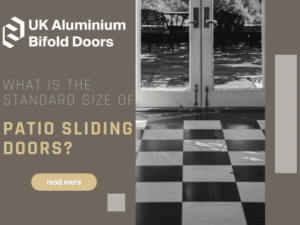Size matters when it comes to roof lanterns. The size of the roof lantern is important to ensure you have enough light in the room and create a bigger space, especially in living rooms.
Various factors contribute to the size of your roof lantern, such as the roof’s structure, position, and where the room faces.
How To Go About Choosing the Correct Roof Lantern Size
Picking the correct size for your roof lantern depends on your taste, but it is also influenced by what you’re working with. You would usually see roof lanterns installed in the middle of the room, but a flat roof accommodates installation in any area.
Let’s look at the factors that determine the size of your roof light.
Which way is the room facing?
The direction your room faces greatly affects the size of roof lanterns. For example, north-facing roof lanterns will only get sun in the morning, whereas south-facing roof lanterns usually get sunlight during the day.
This means the north-facing room would benefit from a larger roof lantern. Have a look at our other blog to answer the question: does a roof lantern let in more light?
Practicality
When thinking about the planning permission, also consider your privacy. Some plans may be rejected if your roof lantern exposes too much of your home. On the other hand, you don’t want the roof lantern to be too big that it can be peered into if your home is overlooked. You just may be letting in more than just natural light!
Structure of your home
If you have an old house, it may not be strong enough to hold a big roof lantern. You must evaluate your existing roof structure and how much it can handle before determining the size of roof lights you need. This helps greatly.
If you’re thinking ahead, work out how the roof lantern will increase your house’s value. A well-placed and right size roof lantern can elevate your house spec significantly.
What is below the roof lantern?
It would be best if you also considered what will go straight below the roof lantern, as it will be exposed to direct sunlight. This is often a kitchen counter or dining table. No matter what it is, the roof lantern will pay a lot of attention, so deciding on the size is important.
For example, you may want your roof lantern to be big enough to run parallel with the bifold doors, and this will allow your roof lantern to blend in effortlessly with the style of the room.
Large roof lanterns can be overwhelming, look out of proportion if it is a small room, and look flashy instead of classy. However, a small roof lantern can be easily forgotten and even pointless in a large space.
How To Measure for a Roof Lantern
If you have looked at our different types of roof lanterns and are now asking, “what size roof lantern do I need”? Don’t worry: we have you covered. The measurements of our roof lanterns are the exterior kerb size, not the gap in the roof.
Taking the correct measurements of your roof is essential when deciding on the size of your glass roof lantern. You will have to give us the width x length of the area, and also consider that the lantern must be on a timber upstand.
Our advice is to compensate for an upstand of 150mm tall and 100mm wide, with the width being in the measurements you give us. The edges of the roof lantern must sit properly on this upstand, with some overhang for adequate rainwater runoff and weathering.
The exterior kerb must stick out 150mm from the roof for this as well. You can find more hints and tips here.
What Types of Glass Lanterns Are Available?
Not only will the type of glass play a role in the comfort of the room, but it also affects the size of the lantern.
You can use toughened glass on the outside and laminated glass on the inside, which can accommodate most sizes of roof lanterns.
The outside glass is very strong, and laminated glass can still hold together if broken – a vital safety feature. You can also expect a soft-coat low-emissivity coating, argon gas fill, and warm edge spacer bars.
You can also glaze your glass which provides optimal thermal performance. High-specification, double-glazed or triple-glazed lanterns can be quite costly, so you have to be sure of your size before purchasing.
Most glass lanterns these days offer the options of solar control and self-cleaning glass. You can get these together or separately. Our website can help you to learn about the types of aluminium roof lanterns that we offer.
Is A Lantern Roof Worth It?
With the correct size, a roof lantern is a terrific addition to your home. They complement anything set below it, whether it is a dining room, aluminium door, or windows.
Lanterns are popular for the following reasons:
- Your room will feel brighter and bigger. It opens up the space.
- It alters the room dimensions and increases the roof height.
- It is aesthetic and a unique way to add natural light to your home, which increases its value.
- Lanterns are energy-efficient, retain heat, and save money on energy bills.
FAQs
What size roof lantern for a 6 x 4 room?
Typically, a 150×250 x 100 cm roof lantern lets the sunlight in at a very low density, while a 150×250 x 200cm lantern offers optimum illumination for medium roofs.
It is generally suggested for extensions based on a size of three to five per cent of the total surface area.
What are the common roof lantern sizes?
They are between 412mm to 3000mg in width and 520mm to 2025mm in length. We provide many choices in sizes, a wide range of styles and shapes, and colours.
How much is a roof lantern?
A new roof lantern cost varies depending on the size, glazing, and glass type. The prices can range from £800 to just over £2000. Visit our website for more information on price matching.
Do I need planning permissions for installing a roof lantern?
Usually, you wouldn’t need planning permission. A lantern is permitted if you adhere to the conditions such as:
- It must not stick out more than 150mm from the roof.
- It is not higher than the highest point of your house.
- It has a side-facing window that is murkily glazed, with openings 1.7m above the roof floor.
This applies to average UK houses; however, converted houses, flats, and maisonettes may differ. You should look into the building regulations in these cases.






